July 19 - 25, 2015: Issue 223
Unique Toys on Display at RMYC Unique Vehicle Show 2015
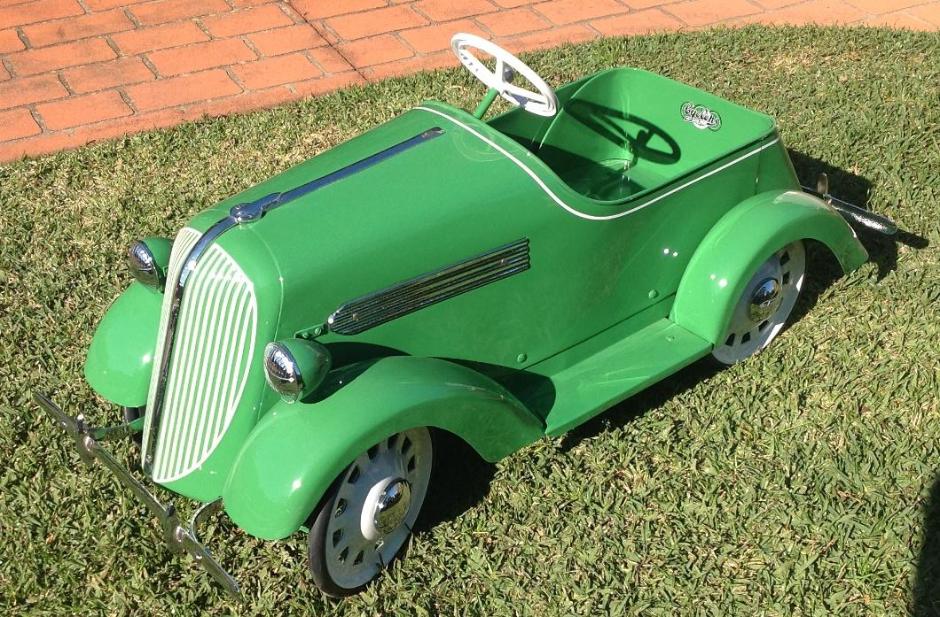
Unique Toys on Display at RMYC Unique Vehicle Show 2015
July 19, 2015
The Royal Motor Yacht Cub of Broken Bay, at Newport, will be holding its 2015 Unique Vehicle Show next Sunday, July 26th.
As well as over 60 vehicles on display, including beautifully restored Vintage cars, Classics, Sports Cars, Hot Rods, Motorcycles, working engines and Models, there will be a rather unique aspect for all lovers of toy cars, young and old alike.
Stuart Lockard, a member of The Australian Pedal Car Club, will be bringing some of his wonderful old pedal cars, trikes and tin toys from the 1920’s to 1960’s to the club for a display for youngsters and those who remember these wonderful built for fun models. Children will also be able to try them!
We spoke to Mr. Lockard during the week about these ‘unique cars’:
When did you first start collecting these beautiful toy cars?
Around six or seven years ago. I had one left over from when my boys were young and then picked up another one in my travels and it has just grown from there.
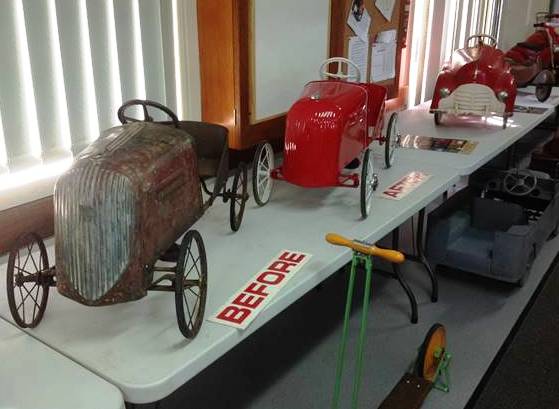 Are you restoring them too?
Are you restoring them too?
Some I restore but others are in original condition. I much prefer them that way, they have the original graphics and colouring.
What is the oldest one you have?
I have a pedal car from 1930’s and also some flippers from the 1920’s as well as a lot of trikes and bikes from the 1930’s, ‘40’s and ‘50’s.
Does this inspire you to investigate the history of each and who thee manufacturers were or their styles were?
Yes, I have found some printed material and obviously the internet provides access to material as well through research. I’m also a member of a club as well, The Australian Pedal Car Club, which is based in the Blue Mountains. We have around 25 members and do these shows for charity all over the country. We’ve been to Wagga and up to the North Coast for example. We often do these displays with car clubs and the toys bring back many memories for many people as well as offer youngsters and insight into toy cars.
What size are they?
They’re about a metre long, around 500 mil wide and 500 mil high.
How do you transport them all to these shows?
I have a large trailer and we usually bring two cars and manage to fit everything in. We will have two or three at the Royal Motor Yacht Club that the kids can sit and have their photograph taken and have a little peddle around in as well.
Fantastic – the youngsters will love that.
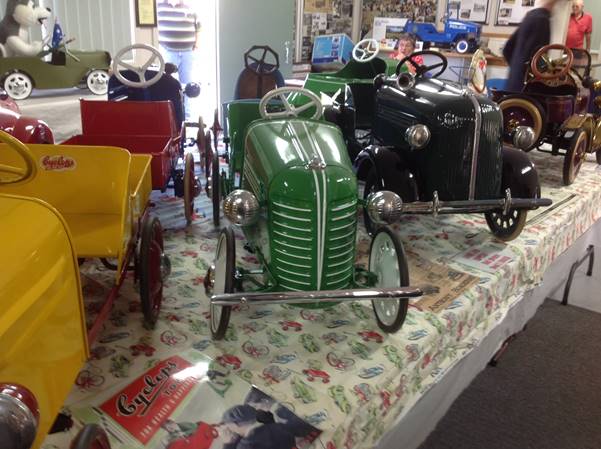
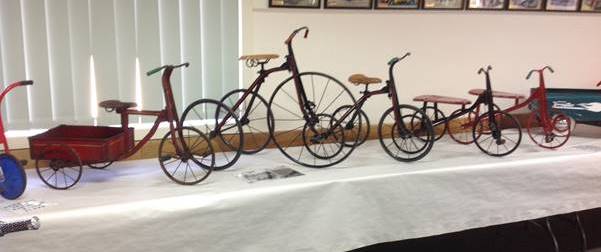
____________________________________________
 2015 will be the 8th Annual “UNIQUE VEHICLE SHOW”.
2015 will be the 8th Annual “UNIQUE VEHICLE SHOW”.
This year the show will incorporate a new category, a selected number of moderns… from the year 2000 through to the present day. This will obviously add even more colour and flare to what has been a fantastic array of motoring history over the last seven years here at RMYC.
Rob Brown (RMYC Event Organiser) said in announcing the event this year,
“We are very excited to host the show once again this year. We are working closely with the Pittwater Motor Enthusiasts Association and their members, who will be show casing some of the rarest motor vehicles, bikes and engines dating as far back as the early 1900’s.
While you are here you can try out our “food and wine tasting” that will run throughout the day. "
The Family orientated and community minded focus of the RMYC is evident again through this wonderful annual event with all donations in ‘voting’ for favourite cars again going to Bear Cottage.
For those who like to stick to the water when visiting the RMYC at Newport, you can make next Sunday an even more special day by catching the historic MV Reliance ferry from Rowland Reserve Bayview or from the Newport Arms Public Wharf. Cost $5.00 per person each way!
Entry is free - members of the Public are very welcome but will need to sign in, if they wish to use the club’s facilities.
The vehicles will be located in the waterfront car park at the Royal Motor Yacht Club, 46 Prince Alfred Parade, Newport. 10am till 3.00pm.
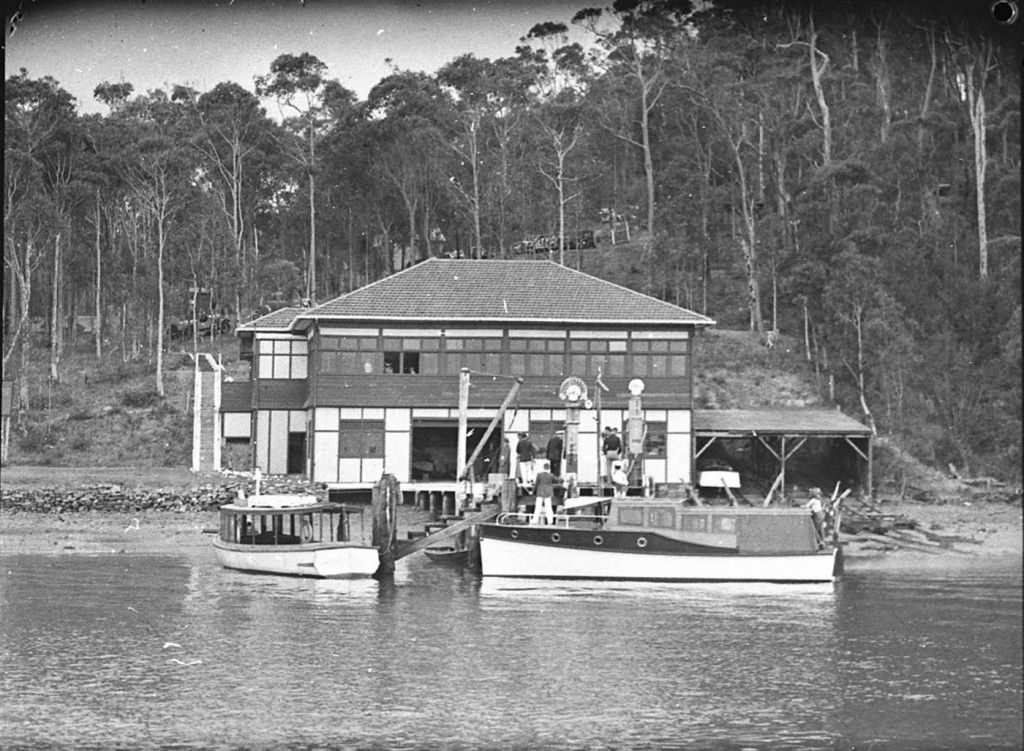
Second RMYC Clubhouse with Unique Vehicles of that time in background on older driveway entrance - 1936 - from 'Pittwater Regatta, photo by Sam Hood, 26/12/1936 - Image No.: hood_13593, courtesy State Library of NSW.
Extras:
Streamlined Pedal Car for Orphans
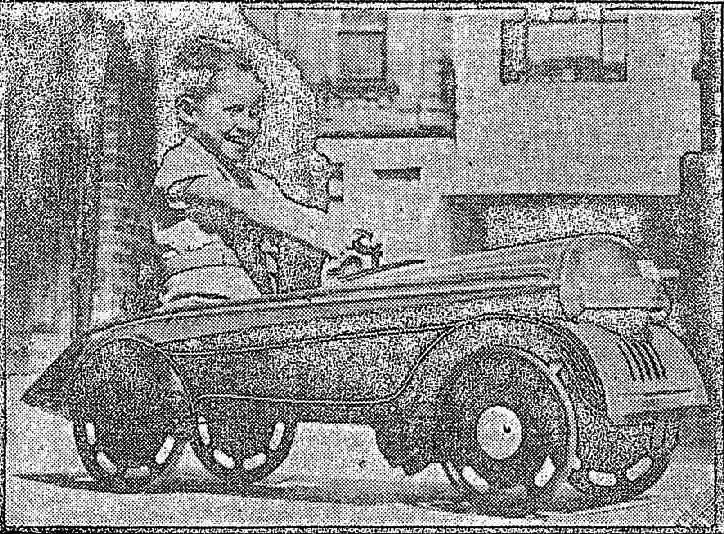
A new, bright red, streamlined child's pedal car(pictured above) is going to help the orphans of this State. It is an identical model of one now being used by Prince William at Government House, Canberra. The car is to be raffled,. Mr. W. J. Lucas, who modelled the car, has donated it to the Daily News Orphans' Christmas Cheer Fund. It will be disposed of in a raffle for which 2000 tickets will be sold. The raffle has been approved by the Lotteries Commission. The car has four speed gears, an adjustable seat, and can be used by children from two to eight years of age. It is on display in the foyer of the Ambassadors Theatre, Perth, where tickets at 1/ each can be bought. W. J. Lucas stores also, have tickets. On December 23, during the evening session at the Ambassadors Theatre, the Lord Mayor of Perth will draw the winning ticket. We thank Mr. Lucas and the ex-servicemen who built this car and we can assure them that it will be responsible for many happy smiles in our institutions on Christmas Day. Will you, too, do something by sending a donation to this fund ?
STREAMLINED PEDAL CAR FOR ORPHANS. (1946, December 12). The Daily News (Perth, WA : 1882 - 1950), p. 3 Edition: CITY FINAL. Retrieved from http://nla.gov.au/nla.news-article78214925
THE EARLY DAYS: A HOME-BUILT CAR OF 1903
By Bede Carroll
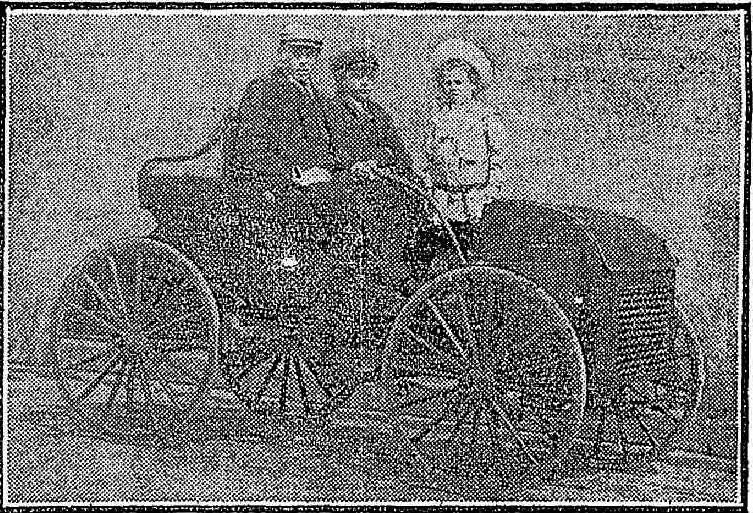
Mr. R. F. Lean built a car at Sunny Corner early in 1903, a picture of which is published to-day. The two boys who are seated in the car are sons of Mr. Lean. They were 12 and10 years of age respectively. They took an active part in building the car, and thoroughly understood the art of motoring and petrol engines before they were 15 years of age. This has proved a great help to father an sons, who are now established in the motor business at Lithgow.
From my earliest days,' stated Mr. R. F.Lean, describing his experience!!, I had an idea that there should be self-propelled vehicles on the roads as upon the railways. Until I was 12 years old I lived close to three railways in Cornwall. As I grew up and began to read, it was with eager interest I read the exploits of Trevithick and Merdock, with their steam road machines. Being of a mechanical turn of mind, it was natural for me to follow up the various efforts that were made to perfect a road carriage for private and public use. At first I was for a steam machine, and I had planned out one (or several) to be driven by a steam engine. This was further impressed upon me by seeing (for the first time) a steam phaeton built by Thompson of Victoria, and which was exhibited by them at the Bathurst shows in 1900. But the advent of the petrol engine about this time, in a much improved form, completely changed my scheme for a steam car, and I decided to alter my plans to suit an engine of the kind.'
The frame work was hickory side-pieces bent (in Sydney) to allow the front wheel clearance in steering. The wheels were ordinary front carriage wheels, front axle, the 'sulk axley, ends, cut off, and fitted into strong pipe T pieces to make up-to-date steering arrangements. This in turn was connected through an upright pillar to a lever ( ¼ pipe) bent to shape and connected to the pillar by a hinged joint so that it might be lifted up for convenience in getting in and out of the car. The engine was placed under a bonnet, in front together with water and petrol tank. Battery ignition was used, and the power was conveyed to the gear by a 3 ½ in. belt, crossed to give better grip. A long pulley was fitted to the crank shaft, with an outrigger bearing and the gears were wood pulleys, the centre one free for neutral; one having a pinion with long hub, which also acted as a bush for one second gear. The other pulley was fixed to the shaft on which all pulleys were carried.' This in turn was worked in conjunction with a dog clutch for top speed. I also had an arrangement of eliding gear for low speed. The belt shifting lever was at the side, as seen in photo. The top gear clutch was worked by a pedal, and also low gear by a pedal.' The brake was ordinary carriage pattern, operated by foot pedal.' There was no reverse nor differential. The rear axle carried right through. Large cogwheels were keyed to the axle, and a system of ratchets fitted in road wheel hubs, acted as differential, so that the outside wheel, in rounding a corner could run free. The inside wheel, of course, was the driver. In running down hills, both wheels could run free. The brakes had to be specially strong, and efficient, to hold the car on long hills.' The car weighed 10 cwt empty, and in the10 years' running had no trouble with brakes, nor did we ever have the car towed home.' On one occasion, owing to the belt giving way, we had to push the car some distance for safety, and walk home, but after repairs to belt and replacing it, we were soon at home again. On another occasion the axle broke on a trip from Sunny Corner to Bathurst, when only four miles out, and 20 miles had to be covered. I had three bearings for the axle, and fortunately the axle parted so that the gears could still be used to drive one wheel. After hanging the loose end up with straps, we proceeded without, further trouble to Bathurst, and, of course, had the axle repaired. I fitted another bearing after this, so that any further trouble in this direction would be overcome. .We had lots of other break-downs, more or less serious, but always managed to get to our destination, and never missed a train. By carefully watching for weak spots, and replacing or improving the parts, we could do all our work quite well.'
Our travelling was principally between Bathurst, Sunny Corner, and Lithgow. I might say the seats were placed back to back, and seated six comfortably. The body was fairly well sprung, and also the front of chassis, but owing to the arrangement of gears I could not spring the rear axle, and this, with the gears exposed, made the wear on teeth very severe. The gears were cast in steel at Lithgow ironworks in Mr. Sandford's time, patterns being made by myself.' On a good bit of road, with 1200 revolutions of the engine, we would get up very fair speed. The car could not be classed as a silent one, but was not any noisier than a buggy. Naphtha was sold in 10gal drums, and cost about 20/each landed in Sunny Corner.' Our first run was on. August 10 (polling day), 1903. I remember this, because it was the first time the women’s' franchise was exercised. The engine cost me £50, and wheels, seats, springs, and other things that I could purchase about £40. The car was built in my spare time, and took about three years. I had a small workshop, with a few home-made tools and a foot lathe that would take bars 30in long. All my turning was done on this, and to make the rear axle I had to do so in two pieces and join it up afterwards.
About four years ago the car was dismantled, the engine being fitted up to drive a generator for a picture show, and it is still in use. The rest is still about our present works, some of the pulleys being in use. My boys used to drive the car about as soon as they were able to turn the engine over. No license was required in those days. We had to be very careful in approaching horses. Ours was the first car ever seen in that district (Sunny Corner), and was a source of much interest.'
A CAR BUILT AT SUNNY CORNER BY MR. R- F. LEAN IN THE EARLY DAYS. MOTORING. (1917, May 20). Sunday Times (Sydney, NSW : 1895 - 1930), p. 13. Retrieved from http://nla.gov.au/nla.news-article122790709
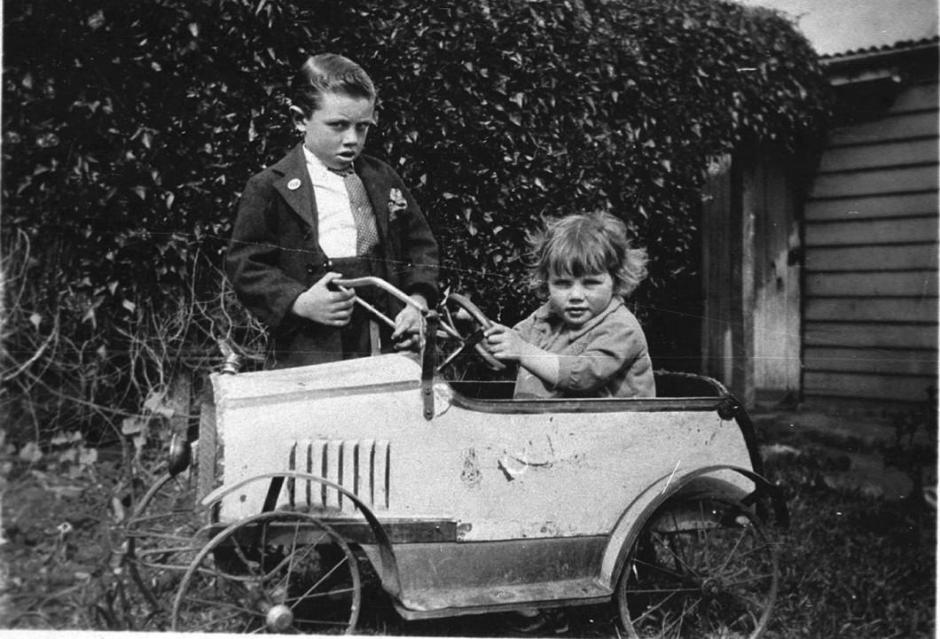
'Dick and Rene playing in pedal car - Parkes, NSW' - Photographed by - Webb R A (Dick) and D I (Rene) Webb "Cedar Cottage", 16-18 Bushman Street, Parkes, Image No.: bcp_00166, from Album 'At Work and Play - 00166', courtesy State Library of NSW.
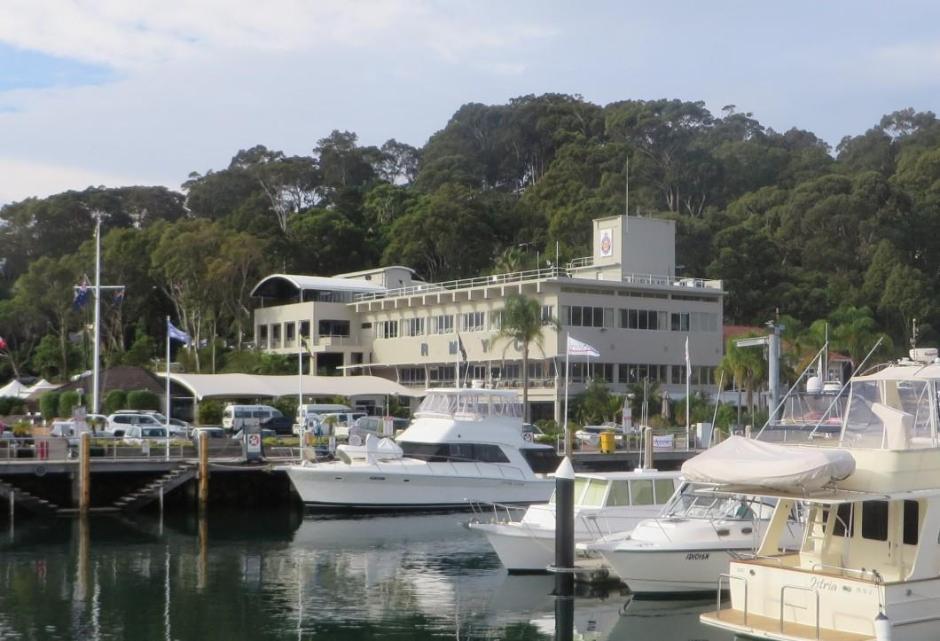
Royal Motor Yacht Club - Broken Bay, at Newport - Clubhouse 2015 - picture by Sally Bacon.
Article by A J Guesdon, Pictures by State Library of NSW Stuart Lockard and Sally Bacon.